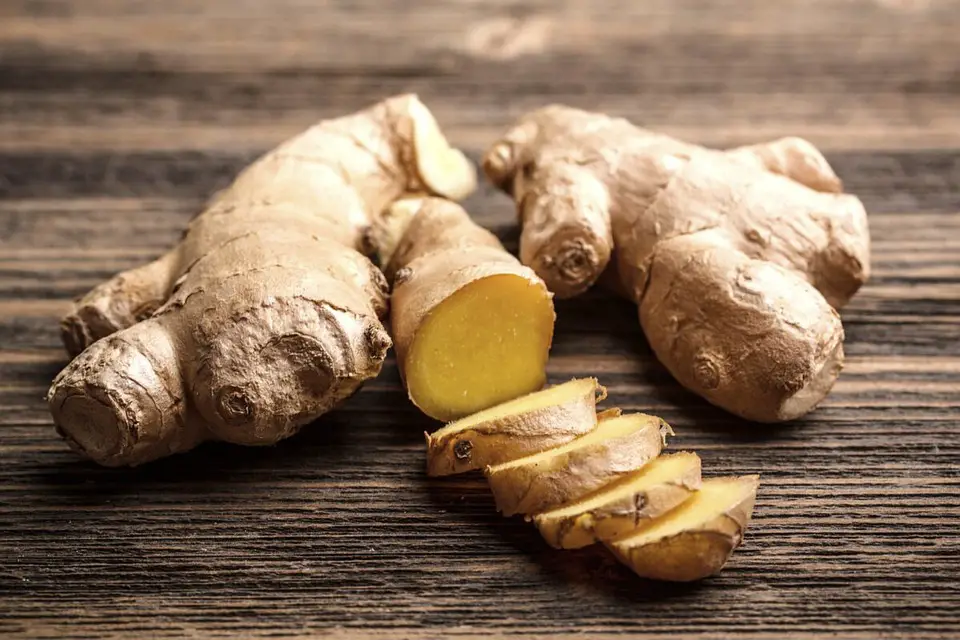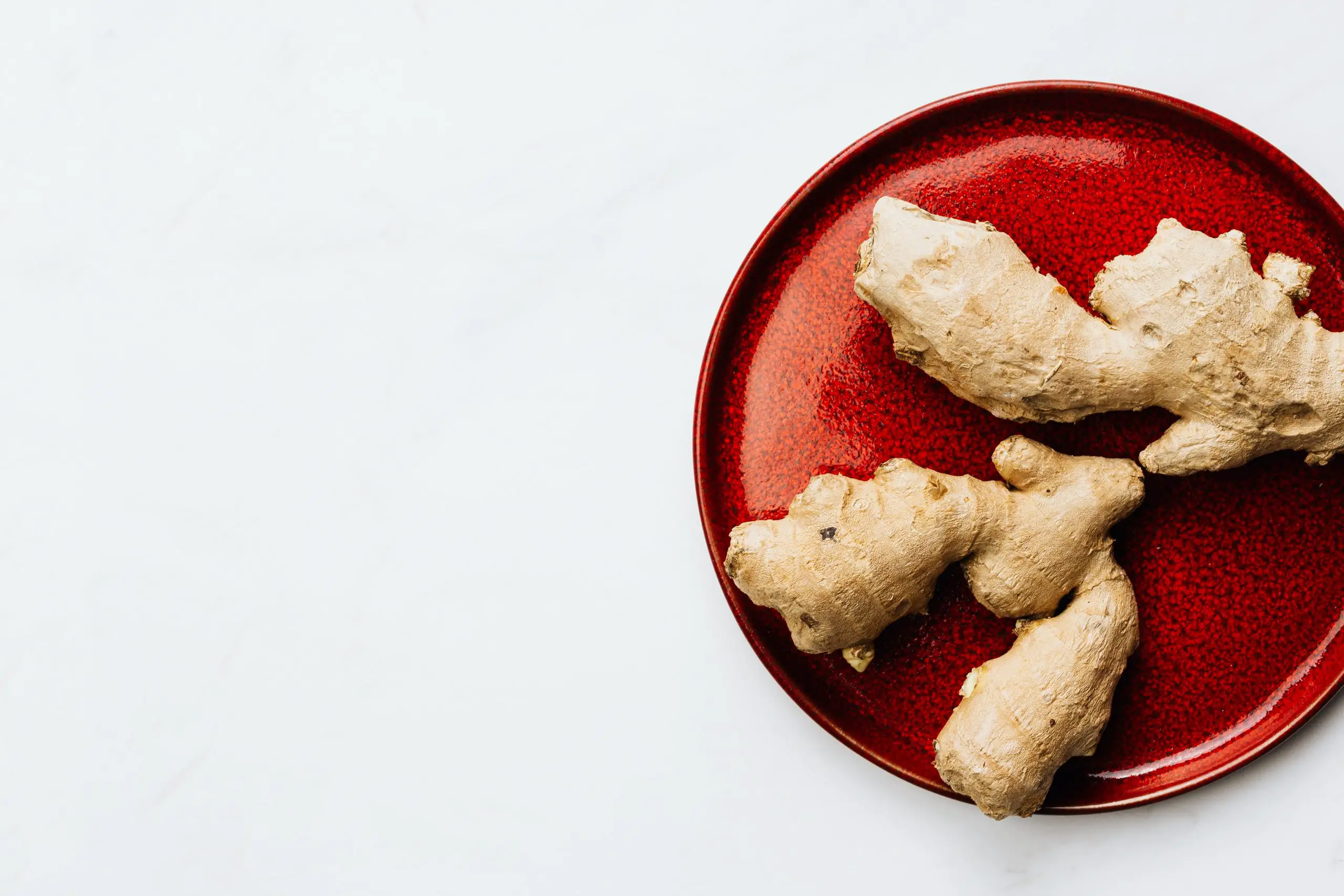The best way to retain the flavor and texture of fresh ginger is to freeze it, thus this is my preferred approach.
It is also our favored method for preserving bell peppers, pineapple, and strawberries, among other foods.
Freezing minced or sliced ginger is quite simple, perhaps simpler than you might imagine! It requires approximately 5 minutes of total hands-on time.
It also reduces food waste, which is always crucial! And best of all, this strategy allows you to use the exact amount whenever it is required.

What is Ginger?
Ginger, or Adrak in Hindi, is an essential ingredient in Indian cuisine. It has a strong scent and a flavor of wood. Ginger has a slightly brown exterior with yellow to tan flesh on the inside. Additionally, it has a tangy, sweet, yet warm and spicy flavor.
Ginger complements a wide variety of flavors, from sweet to spicy. It complements baked foods while imparting a unique scent. In addition, it imparts the appropriate amount of heat and zing to savory dishes. When added to beverages, ginger imparts a spicy and warm flavor that immediately soothes the throat.
Ginger’s Health Benefits
Ginger is a spice with numerous beneficial health and medical properties:
- It is anti-inflammatory and antibacterial.
- It aids in the relief of morning sickness and nausea.
- Ginger improves digestion and reduces gas accumulation.
- It is a universal cure for colds and influenza.
- It’s an excellent source of antioxidants
How to Freeze Ginger?
What you Require
To freeze fresh gingerroot, you will need only a few common kitchen materials, including a knife, a freezer-safe bag or container, a marker, and, of course, the fresh ginger.
Steps for Freezing Ginger
The easiest way to freeze ginger is by vacuum-sealing it in a freezer-safe bag or container. Start with the freshest gingerroot possible. You should select portions that are plump, firm, wrinkle-free, and aromatic, as they will have the best flavor.
Step 1: Peel the ginger (optional step). Use the side of a spoon to remove the ginger’s thin skin. I do not recommend peeling the skin with a vegetable peeler or knife.
Don’t worry if some skin fragments remain. Ginger peel is edible, so you can leave it all on or simply skip this step if you wish. If you choose to remove the skin, save the remnants for vegetable stock!
Step 2: Slice or mince the ginger, depending on personal preference and intended purpose.
Ginger slices are ideal for infused drinks and teas, as well as anything that will be blended or pureed, such as smoothies and sauces.
Utilize a sharp knife to thinly slice the ginger. Use a mandoline to create uniformly thin slices.
The ideal form of ginger for cooking, such as stir-fry dishes or unblended soups and sauces, is minced ginger.
Using a sharp knife, chop into tiny pieces.
You could also mince the ginger using a food processor. Ginger is quite stringy, so roughly cut it before adding it to a food processor, and pulse it until it is broken down.
Step 3: Transfer the ginger to a freezer-safe bag.
Deflate the bag of ginger into a thin sheet by squeezing out all the air. Use a chopstick or pen to create small chunks of minced ginger by pressing lines into the bag. This will make it much simpler to remove the appropriate amount of ginger in the future. Place it in the freezer flat.
Break off pieces as needed and cook frozen directly. There is no need to thaw the ginger beforehand.
Alternately, you can press the chopped ginger into small cube trays, freeze them for 3 to 4 hours, and then transfer them to a freezer-safe bag. There is an additional step, however, some individuals prefer it this way!
Use my freezer inventory chart to keep track of your frozen ginger and other items in the freezer!
Freezing in a Different Way
Freeze in Ice Cubes Trays
We recently purchased a silicone ice cube tray from ALDI that is nearly identical to this one. You may freeze ginger in this or a standard ice cube tray.
Place either one teaspoon or one tablespoon of ginger in each ice cube spot. Utilize your fingers or a spoon to compress the ginger as much as feasible. Once the squares have been frozen overnight (or for at least 8 hours), you can pop them out and keep them in a freezer-safe container until you’re ready to use them!
Flash Freeze on Parchment Paper
If you don’t have ice cube trays, line a cookie sheet with parchment paper (I love these!) and evenly distribute one teaspoon or one tablespoon scoops on the paper. Leave approximately 1 inch between each scoop. Place the cookie sheet in the freezer overnight, or for a minimum of eight hours. When the ginger rounds are completely frozen, store them in a freezer-safe container.
How should Fresh Ginger be Stored?
Fresh ginger root can be refrigerated or frozen for storage. Ginger can be stored either as a whole root or as a paste. However, before doing either of these procedures, you must first wash the root under running water. You can allow it to air-dry on the kitchen counter or dry it thoroughly with a kitchen towel.
Storing Ginger Root
If I will use ginger within a week, I leave it out and store it in a cold, dry location.
Ensure that the root is totally dry before storing it in the refrigerator. If it is even slightly moist, the ginger will swiftly perish. It should be dried with a kitchen towel.
If keeping the whole root, use a resealable plastic bag and place it in the crisper drawer of the refrigerator. Don’t peel the skin if you’re going to refrigerate the fruit. However, examine the ginger for mold before using it.
How to Pick Fresh Ginger?
If you can’t find the best ginger at your regular grocery store, try a specialty market where it is in greater demand. Asian and Indian markets are worthy investments.
It may come as a surprise, but ginger can be grown at home. Plant a gingerroot in a tiny pot and leave it on the window sill for an endless supply. It will produce shoots and leaves similar to other houseplants. Whenever you need ginger for a dish, simply lift the plant, cut off a section of the root, and return the remaining portion to its pot. Cutting the root won’t harm the plant in the least, and as long as you water your ginger plant, you’ll never run out.
How Long can Ginger be Stored in the Freezer?
Freezing ginger is the most effective method for extending its shelf life; both unpeeled and peeled ginger can be stored in the freezer for up to six months. To make it easier to follow recipes, freeze grated ginger in ice cube trays after measuring it beforehand.
To preserve ginger indefinitely, place the unpeeled root in the freezer. Place it in a freezer bag or another container safe for the freezer to prevent freezer burn. Whenever a recipe calls for fresh ginger, remove the root from the freezer, grate what you need, and return the remainder to the freezer.
How do you Get Ginger Out of the Freezer?
The frozen portion can be quickly defrosted by placing it in a bowl filled with cold water; this should take about two minutes to accomplish. What is this, exactly? It is also possible to defrost the ginger in the microwave for about 15 seconds; if you do this, the piece of ginger will be much simpler to slice.
When it’s Frozen, does Ginger Change Color at All?
After consulting with our science editor, we discovered that ginger loses part of its acidity when it is kept in a cold environment for an extended amount of time. As a result, some of the anthocyanin pigments in the ginger turn a color that is somewhere between blue and grey when exposed to light.
How do you tell if Ginger that has been Frozen is Still Good?
Ginger will start to turn brown and get softer as it deteriorates closer to its expiration date. If the surface of the ginger has some wrinkles but it still tastes fine, you can still use it even though the skin has some wrinkling. When the ginger has completely lost its color and flavor, you should not continue to use it. The flesh of bad ginger is grey in color.
Conclusion
If you’re extremely short on time (or extremely lazy), there’s an even simpler way to freeze ginger: peel it and freeze it whole!
Remember that frozen ginger grates easily, so whenever you need ginger for a dish, simply remove the necessary amount from the block and grate it.
Fresh ginger will be moist when grated, thus it is unlikely that you will need to add liquid. If your ginger is nearing its expiration date, it may be on the dry side. Use the ice cube tray technique and a small amount of water to freeze the pieces together.
Always identify containers! It’s a good habit to name everything you put in the freezer, as it’s likely that you won’t be able to see through the container in the future.

